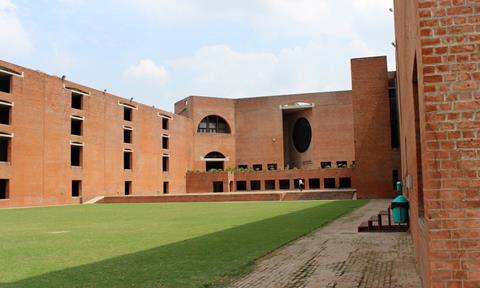Ahmedabad institute criticised as it reverses previous decision to save 1960s buildings

The Indian Institute of Management Ahmedabad (IIMA) has come under fire after announcing plans to demolish most of its Louis Kahn-designed dormitory buildings.
Architectural historian William J.R Curtis said the move, which comes two years after the Gujarat-based institution said it would save the world famous 1960s landmarks, was an act of “absolutely wasteful destruction”.
He also accused the IIMA of a “lack of transparency” after it refused to publish a report that found the dorms were structurally unsound and that a restoration would be “technically impractical and ineffective”.
The institute’s initial announcement of its plans to pull down the dormitories in 2020 was shelved after it sparked a backlash from architectural historians including Curtis, who launched a petition to save them which gained nearly 20,000 signatures.
The IIMA has now said it will flatten 14 of the 18 dormitory buildings and they would be “remodeled in line with the Louis Kahn heritage and keeping in mind the functional needs of current and future residents of the campus”.
In an email to alumni, the institute’s director Errol D’Souza said the report found most structural elements of the buildings have “insignificant residual life” and that rebuilding them was “unavoidable”.

But in a letter to D’Souza, alumni, the institute’s board of governors, Curtis said the IIMA should “think outside the box”, rather than engage in a “skin-deep Americanisation”.
“One does not want to fossilise Kahn’s scheme but one does need to respect its essential qualities, attributes and guiding principles,” he said.
“The challenge here is creative reuse, but in a manner that respects the integrity of the original, not the absolutely wasteful destruction of a masterpiece replace by a third rate pastiche”.
He added that as “temporary residents of a universal masterpiece”, the institute had a long-term responsibility as “custodians of a heritage that should be handed on with pride to future generations”.
The red brick buildings are famed for their use of large geometric shapes as window openings which shed blocks of light onto vast internal areas. Khan was appointed to design the campus in 1962 alongside Pritsker Prize-winner Balkrishna Vithaldas Doshi.
Curtis said that the regime of Indian prime minister Narendra Modi had seen a flourishing of “smash and grab capitalism” and that modern architecture associated with Jawaharlal Nehru, who led the country in the 1950s and 60s, had come under attack.
“Why be restricted to the modern era? Why not shift the aces at Fatehpur Sikri to suit some contemporary whim?” he said, referring to the 16th century Mughal capital, a UNESCO World Heritage Site.
The IIMA has been contacted for comment.

















1 Readers' comment